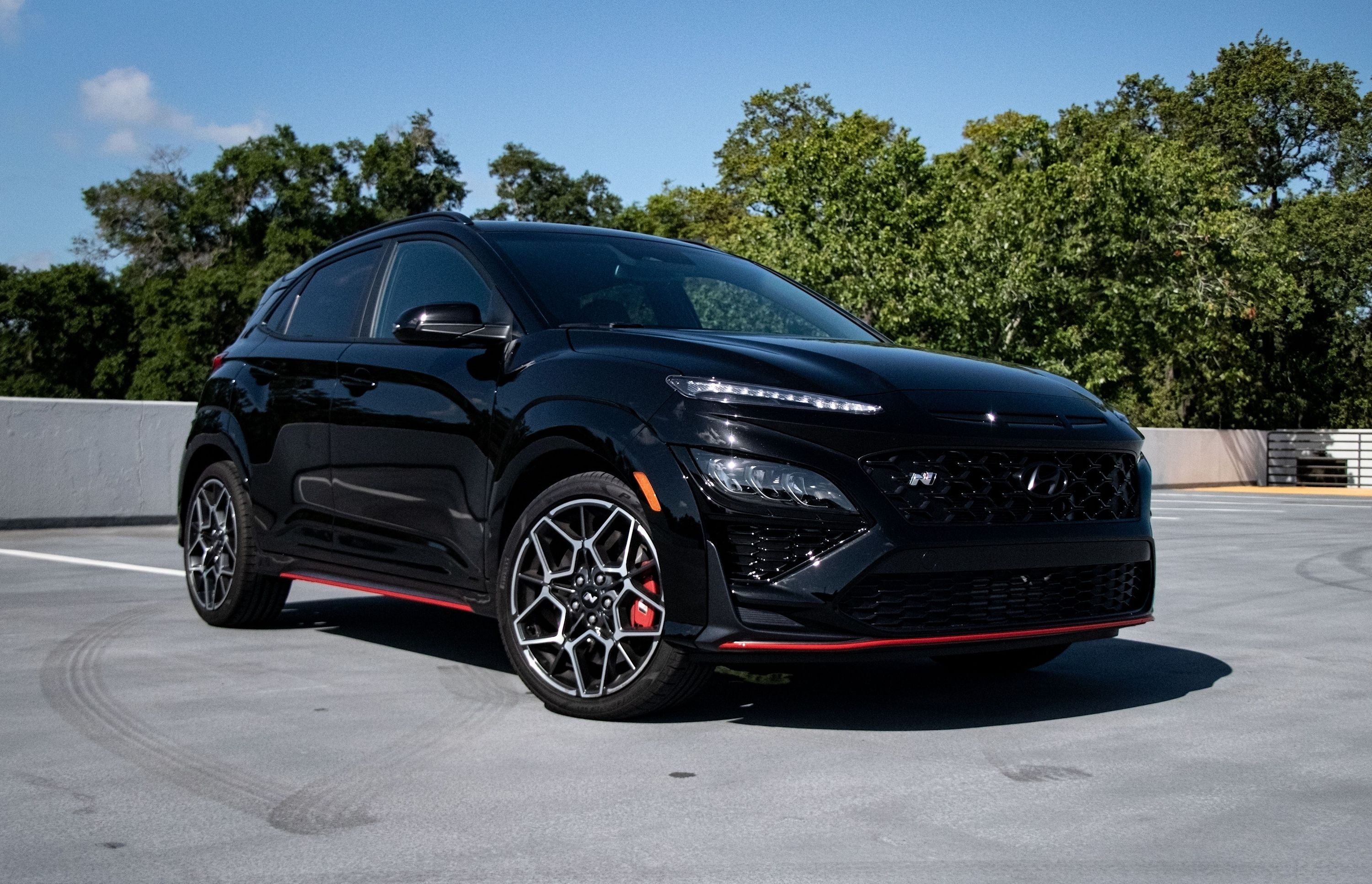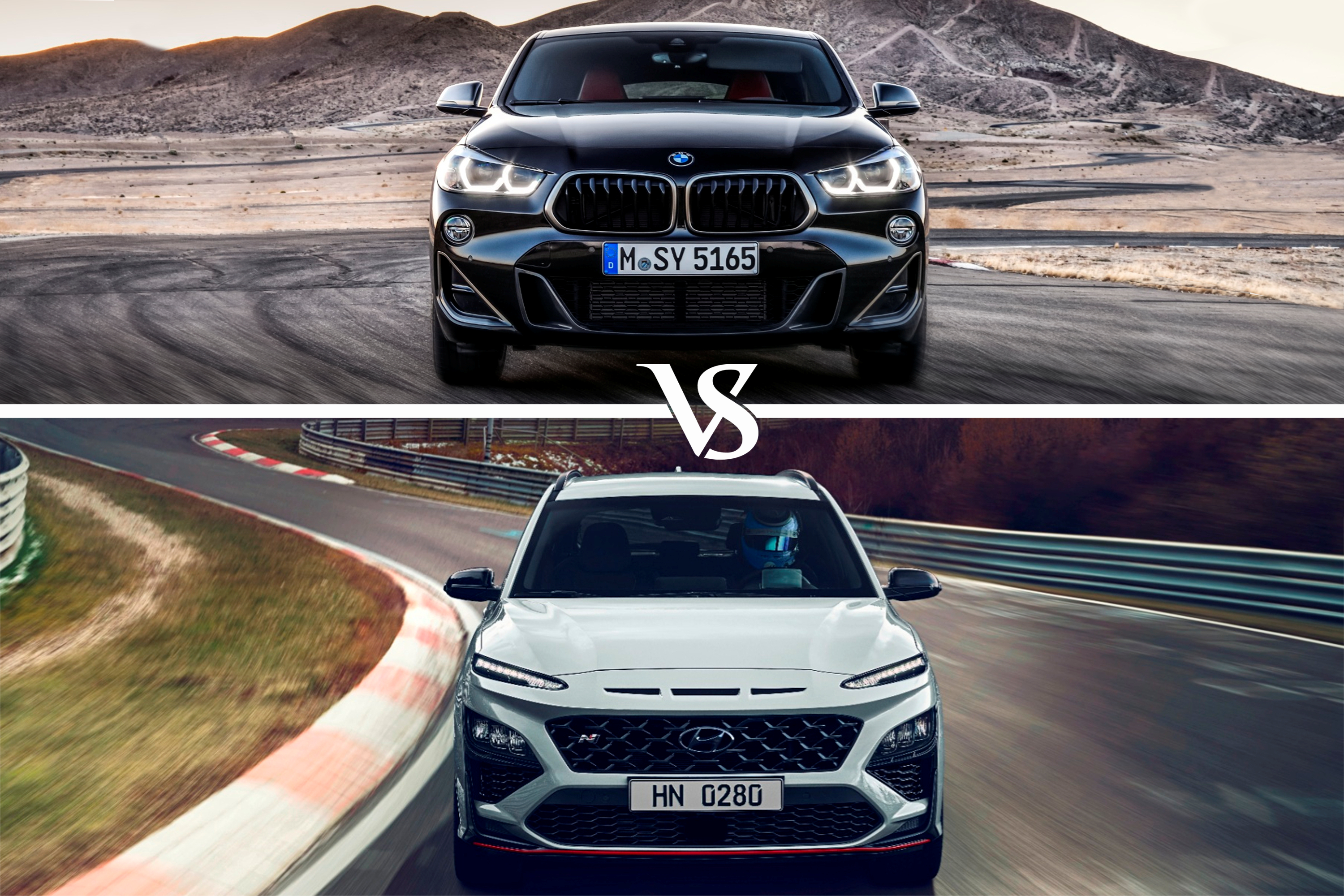
The 2022 Hyundai Kona N has just been revealed, and it seems like quite an exciting proposition. It doesn't have a heavy all-wheel drive system, but it does have a clever front differential. And it looks pretty damn cool. But while Hyundai and Kia have been smashing out exciting cars for the past few months (years) - and that's a good thing - these more interesting vehicles carry price tags that put them in contention with some seriously premium metal. Is the new kid on the block the one to go for, or is something like BMW's tried and tested X2 a better option? Let's find out.
Styling and Design
BMW's slightly strange X2 Edition M Mesh aside, the regular X2 is a sharp crossover with handsome looks. Yes, the kidney grilles are large, but not offensively so as with recent products from Munich. A pair of fog lights below the LED headlights add a touch of old-school charm, and that theme continues at the back with a BMW badge on each C-pillar.
The Kona N, on the other hand, is far more obvious about its sporting intentions. You get three nostrils in the front bumper, a complex mesh design in the front grille, super slim running lights, extended side skirts, and arguably the busiest rear end that has ever been created. If you like subtlety, we advise picking the Bimmer. If you want to shout about your car even when it's parked, get the Hyundai.
Interiors: Sophisticated Class or a Sea of Plastic
Just based on that heading, you can tell that the Hyundai is losing this part of the comparison. Sure, the Kona N boasts a 10-inch infotainment display, a matching driver cluster, a head-up display, a lap timer, and bucket seats. But there's a problem: most of these cool features are let down by a sea of gray plastics, and in a car that will likely cost around $40k, we'd hope for better. That said, we do concede that the X2 M35i is a more premium offering and cares less about sportiness than luxury, but in the Bimmer's cabin, there seems to be not only a greater interest in quality and contrasting colors but also a better balance between sportiness and style. The German interior is always better, it seems.
Powertrains and Performance
Okay, so we've pointed out the Kona N's obvious flaws, but what really matters here is how it performs on the road. Like the X2, it features a 2.0-liter turbo-four, here linked to an eight-speed dual-clutch automatic that drives the front wheels only. Hyundai says that this makes the Kona N capable of up to 286 horsepower with "N Grin Shift" or 276 hp in normal driving conditions. This translates to a 0-60 time of 5.5 seconds with launch control and a top speed of 149 mph.
BMW's setup is similar: a turbocharged 2.0-liter four-banger powers the front wheels via an eight-cog auto, but the M35i produces 301 hp and 331 lb-ft of torque. As a result, 0-60 takes just 4.7 seconds while top speed is 155 mph. The Hyundai seems licked here, but with an e-LSD called N Corner Carving Differential and a likely lower curb weight, the Kona N could be better to drive. Until we get behind the wheel, the BMW wins on paper, but that may change in the real world.
Pricing and Verdict
Sadly, at the time of writing, Hyundai had not yet informed us of what the Kona N will trade hands for when it lands here in the US. However, the Kona N is very similar in terms of physical components to the Veloster N, and with a DCT instead of a manual transmission, that car costs $33,750. As a bigger, more spacious vehicle, we wouldn't be surprised to see the Kona N cost around $35k too, although options will likely push that figure into the 40s.
Nevertheless, that would still be a bargain compared to the X2 M35i, which starts at more than $46,000 before any options. Tick a few boxes and you'll spend $50k on the Bimmer. So although the BMW is the better vehicle in terms of styling, luxury, and probably performance, the Kona N may well cost ten grand less, and for that reason, we think it's definitely worth considering. It's the car we'd buy if it were our money.

